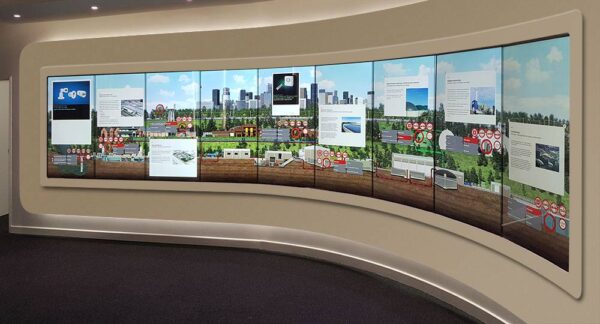There’s a good reason why video walls are growing in popularity – they are a great visual means of getting your message across to a variety of people, simply because they automatically grab your attention. It’s hard for anyone not to look at a video wall, after all. The video wall tends to impress the viewer and creates a ‘wow’ factor. However, merely putting some screens on the wall does not make for a successful video wall, and the software you use will be just as important as the hardware that is mounted. Ever wonder how to make the most of your wall? Here are the fundamentals on creating the perfect video wall for your needs.
Determine your needs
Your clients are important to you – sending out the right message is crucial. If you list down your purpose (as specifically as possible), you’ll get better insight in what exactly it is you need. What exactly is it that you want to communicate, and what is the best way to do it for optimum results? You need to meet expectations – in fact, you need to surpass them.
Attracting attention
You want (no, you need!) to attract attention; that’s the very first step. Make sure to study your target market and see what it takes to attract the most attention from the public. Get as much data from your target demographic as possible. Think also about how many pictures will be shown at one period of time; will you need one large picture, or do you want to break up the total display space?
Message is everything
Once you’ve attracted attention, you need to make sure that your message comes across in the most positive possible way.
Use appropriate mounting
Is the existing wall structurally sound? Should you be installing extra infrastructure to add strength to your video wall? Don’t forget ease of access and convenience as well.
Technological necessities
You need to think in a practical way as well – you need to consider the wiring and the electrical requirements of your display. Have professionals do most of the work.
Don’t forget that you may want to invest a little in the right audio system as well. You may want to present images on the video wall without sound, but if you do use sound, make sure it matches (or surpasses the quality of the images). You want to create a professional impression, after all, and there is nothing worse than a wrongly timed audio-byte (the lips move but the words come half a second later), or speakers that are either too loud or emit too much static. All elements should work together perfectly for the video wall to give out all its benefits.

